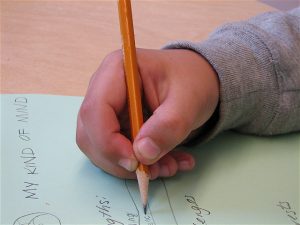Do you wonder if your child partakes in too much screen time? Do you ask yourself if the things they are watching or doing are worthwhile? These questions seem to be ever-present in my Facebook newsfeed suggested articles. This week I watched a TED talk by Sara DeWitt who discussed three main fears parents and guardians have about screen time. I also read a fabulous article published by The Canadian Paediatric Society that shared healthy strategies for parents when using digital technology with their children.
Sara DeWitt works for PBS Kids and is working toward “harnessing the power of technology as a positive in children’s lives.” She feels that we are missing a big opportunity by denying children use of interactive technology. The three main fears that she identifies are: screens are passive, they are a waste of time, and they isolate the parent from the child.
In her talk, she provides examples of PBS programming or games that show opposite findings. The most shocking to me was the example she provided for the second fear (waste of time). Here, the researchers wanted to see if they could use a computer game to predict the preschoolers scores on a standardized test. Sure enough, the results were that how the preschoolers did in the game was almost exactly how they did on the standardized test. This has potential to be game changing when assessing children. If games could assess children in a low stress way, perhaps their results would improve.
In conclusion, DeWitt states that the key to interacting with technology is parental involvement. When parents are watching, doing, and talking with their children, while they are using technology, the children are getting all the benefits. We must “raise our expectations” (DeWitt) and use the appropriate content in order for it to benefit the children.
The Canadian Paediatric Society wrote their article to “inform[] best practice strategies for health care providers.” The article focuses on the impact screens have on development, psychosocial effects on children, and impacts on physical health. This article separates each area of health and then lists the benefits and the risks. It gives caregivers direct scenarios for best use and possible risks associated with overuse. After each health section it includes a section titled: “What makes a difference?”, which provides clear guidelines for caregivers. If you only read this section, you will gain insight into their suggested best practices.
While DeWitt’s TED talk was a brief overview of positives, the article critically looked at positives and negatives associated with screen time. Both agreed that parental involvement was key to getting the most out of digital technology. Talking with your children, using mobile tech for learning purposes, and having clear guidelines about when technology use is appropriate, creates the best-case scenario – using technology as a tool, not a replacement for social interactions; as in all things in life – a balance.



Recent Comments